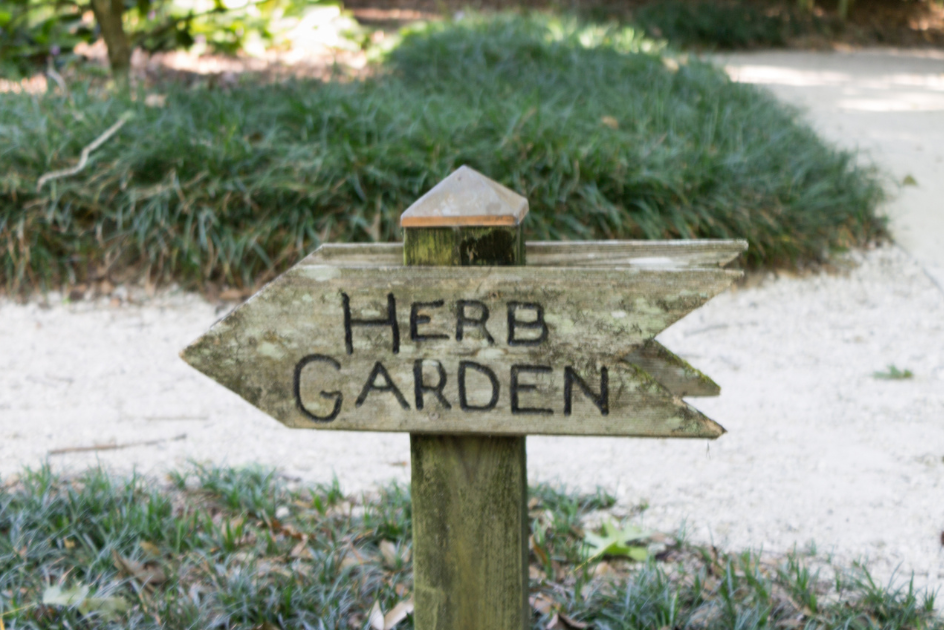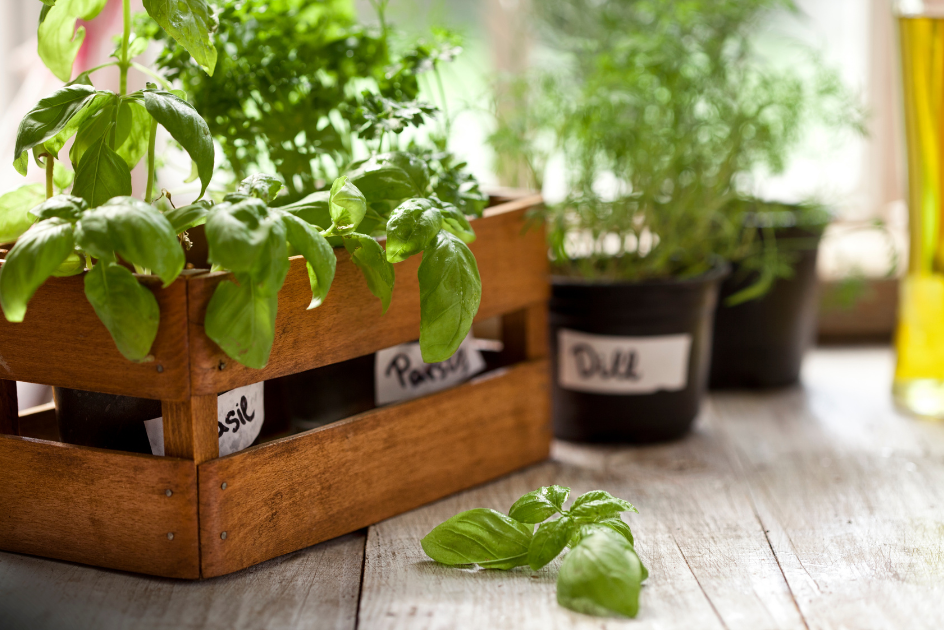Your Complete Guide to Growing Winter Herbs
Your Complete Guide to Growing Winter Herbs
.png)
For many people, winter is the one time of year when gardening is a no-go. But it doesn't have to be that way. Even in the winter, you can practice both indoor and outdoor gardening. How? By growing hardy herbs, of course!
Herbs are tasty plants that are often used for seasoning and dressing up beloved dishes and meals. Many of our favorite herbs can be grown right at home, both in our garden and on our windowsill.
Some herbs are grown outside, some need to be indoors, but many can be grown in either location.
Looking for tips on winterizing your garden? Check out this blog post!
In this post, we will discuss some herbs that can stay outside and re-bloom or self-seed in the spring, herbs you can grow inside, and how to make your own windowsill herb garden.
Keep reading to learn more!

Which Herbs Can Re-Bloom Outdoors in the Spring?
During the cold weather months, many people find themselves missing the joy of gardening. However, certain hardy herbs can remain outdoors even in the winter. If you live in Ohio, which is classified as Zone 6, these herbs are particularly suitable for your climate.
Let's look at a few herbs that will re-bloom or self-seed outside in the springtime.
- Sage. A perennial plant that can withstand freezing temperatures and will re-bloom in the spring. Sage not only provides a delicious flavor to your dishes but also adds a beautiful touch to your garden with its gray-green leaves.
- Common thyme. A versatile herb that is known for its hardiness, thyme has fragrant leaves and can be used in a variety of culinary dishes.
- Oregano. Another hardy herb that can withstand cold temperatures is oregano. With its strong flavor and aroma, oregano is a staple in Mediterranean cuisine and a great addition to your winter garden.
- Chives. This herb will add a mild onion-like taste to your dishes.
- Chamomile. With its delicate and calming aroma, chamomile can also re-bloom in the spring. Its flowers can be used for brewing tea or as a soothing addition to various recipes.
- Mint. Mint is a refreshing herb with a distinctive scent and is another great option. Mint can be grown in containers or directly in the ground and provides a refreshing touch to beverages and desserts.
- Lavender. Lavender has beautiful purple flowers and is a hardy herb. Its calming fragrance can bring a touch of tranquility to your garden.
- Tarragon. With its unique and distinctive flavor, Tarragon is a great addition to your herb collection. It can be used in various dishes, especially in French cuisine.

Indoor Herbs to Grow During Winter
While growing herbs outdoors during winter is a fun excursion into cold-weather gardening, sometimes the weather becomes too cold, and you must transfer our outdoor herbs inside. If temperatures start to plummet and frost is on the horizon, you need to be sure you have some small pots prepared so you can transfer your herbs indoors quickly.
Here are some simple steps to prepare a small pot with soil and fertilizer for indoor growing:
- Start by choosing a suitable pot for your herbs. A small pot with a drainage hole at the bottom is ideal. Make sure the pot is clean and free from any previous residues.
- Fill the pot with a well-draining potting mix. Avoid using garden soil as it can be heavy and may not provide sufficient drainage. Instead, opt for a quality potting mix available at Knollwood Garden Center.
- Add organic fertilizer to the potting mix. Herbs are typically not heavy feeders, so a slow-release organic fertilizer works best. Follow the instructions on the fertilizer packaging for the appropriate amount to use.
- Mix the fertilizer into the potting mix thoroughly to ensure even distribution. This will provide your herbs with the necessary nutrients for healthy growth. You can have your pots on stand-by in the event that you need to quickly transfer your herbs.
For more tips on choosing the perfect pot size for your plants, check out this blog!
Remember, if the temperature outside gets too cold, it's crucial to have prepared pots to bring your herbs indoors.
If you do not have time to transfer your herbs before a frost, use a frost blanket to cover the herbs in the garden and prevent frosts from damaging them. Additionally, have pot covers ready for your potted herbs so you can easily transfer them indoors during cold spells.
Creating an Herb Garden on Your Windowsill
Creating an herb garden on your windowsill is a wonderful way to have fresh and fragrant herbs right at your fingertips. And it is a garden you can keep going all year long. With just a few simple steps, you can create a mini herb garden that will thrive on your sunny windowsill.
Firstly, choose the right herbs for your windowsill garden. Rosemary, chives, basil, sage, and oregano are all perfect choices for a south-facing window as they require ample sunlight. Ensure you select small varieties suitable for small spaces, such as compact basil or dwarf sage.
Next, gather the necessary supplies. You will need small pots or containers, potting soil, and seeds or small herb plants. Fill the pots with well-draining potting soil, leaving enough space for the roots to grow.
Once your pots are ready, plant your chosen herbs, following the instructions on the seed packet or transplanting the small herb plants. Water them generously and place the pots on your sunny windowsill. Remember to water only when the top inch of soil feels dry to the touch, as over-watering can cause root rot.
To harvest and preserve your herbs, you should wait until they have reached a good size. Harvesting should be done by snipping off only a third of the plant's growth to ensure it continues to thrive. When harvesting, choose the outermost leaves or stems to encourage new growth.
To preserve your herbs, you can air dry or freeze them. Air drying involves tying small bunches of herbs with string and hanging them upside down in a dark, well-ventilated area for a few weeks. Freezing can be done by chopping the herbs, placing them in ice cube trays, and filling them with water or oil. These frozen herb cubes can be easily added to your dishes when needed.
By following these simple steps, you can create a mini herb garden on your windowsill, providing you with fresh and aromatic herbs throughout the year.
Gardening Supplies All Year Long from Knollwood Garden Center
Gardening is one of our favorite things.
Spice up your life by having an indoor or outdoor herb garden year-round so that you will be prepared for the spring when your herbs will self-seed or re-bloom again.
And when you grow herbs, you can augment your dishes with freshness and flavor.
No matter what kind of garden you are working on, Knollwood Garden Center is here for you. We have all the seeds and supplies you need to grow your garden, and our team of garden experts are here to help.
Stop by Knollwood Garden Center today!
Happy with your visit? Leave us a five-star review on Google here!
Follow Knollwood Garden Center on Facebook and Instagram for more gardening tips!
